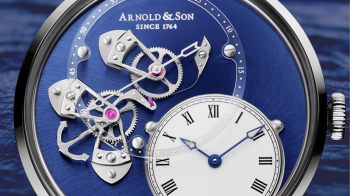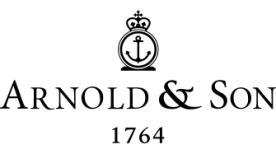Not a lot of people know this, but the English used to be really amazing at mechanical watchmaking. They were real pioneers in this field, and then other countries came and took their spot. (This happens a lot with the English, and I don’t know why. Look at football, for example. They basically originated the sport, but haven’t won the World Cup since 1966.)
The invention of the balance assembly, which finally allowed timepieces to be made reliably in portable form, is attributed equally to Christiaan Huygens (some Dutch guy) and Robert Hooke, English scientist and mathematician, in the late 1650s. The master-apprentice duo of Thomas Tompion and George Graham were widely acknowledged to be among the most successful and respected watchmakers of the late 17th century, with George Graham’s legacy going strong to this day in the modern company which takes its name and inspiration from his historical work.
The repeater timepiece as we know it today would not be the same without two Englishmen — the Reverend Edward Barlow and Daniel Quare — who squabbled over who had first used a particularly pivotal mechanism in a sonnerie timepiece. Eventually their dispute had to be officially settled by King James II in 1687. Don’t forget 18th-century English watchmaker Thomas Mudge, who invented the lever escapement, now used in the vast majority of mechanical watches manufactured worldwide. The lever escapement somehow became known as the Swiss lever escapement, for reasons which currently escape (!) me, but it seems to be a gross miscarriage of justice in acknowledging the English roots of this important escapement.

Now, this article is already far too long, so I’m not going to start going on about Thomas Earnshaw and his bimetallic self-compensating balance wheel and spring detent escapement, but trust me, it’s super important in watchmaking history. Let’s finish with the giant of English watchmaking, John Harrison, who created the H4, the first marine chronometer capable of keeping good time on the high seas. It allowed ships to navigate with unprecedented accuracy, precipitating the golden age of marine exploration, accelerating the colonial era and allowing the British Empire, with this homegrown technological advantage, to become the largest empire in human history. Talk about a watchmaker changing the world.
The English watchmaker we’re concerned with here is John Arnold, contemporary of Abraham-Louis Breguet. Arnold and Breguet were super tight; each of them sent his son to apprentice with the other, that’s the level of friendship and mutual admiration we’re talking about here. At the height of his illustrious career, John Arnold was producing marine chronometers, highly sophisticated detent escapements, experimenting with gear-tooth geometries and hairsprings of various forms. His most famous creation was a pocket chronometer that was praised by the Royal Observatory of Greenwich for being “superior to every one that that had been made before it”. John Arnold’s highest professional goal was ultimate precision, a pursuit he was so deeply dedicated to and associated with that when Abraham-Louis Breguet invented the tourbillon mechanism, he installed the very first example in a modified John Arnold chronometer, as a tribute to his friend and colleague.
Fast-forward to the 21st-century, and the modern company Arnold & Son have continued to uphold the pursuit of chronometric excellence. While timepieces such as the HM Perpetual Moon acknowledge the patronage that John Arnold enjoyed from his king, and the Tourbillon Chronometer N° 36 is a nod to the Arnold-Breguet tourbillon that Abraham-Louis Breguet gifted to Arnold’s son (his former apprentice John Roger Arnold), it is the beautifully conceived and elegantly executed DSTB that perfectly exemplifies the mindset of a chronometry obsessive.

About five years ago, the dead-seconds display started to come back into fashion. This is a highly precise seconds hand that moves only once every second, instead of the continuous sweep that we associate with most mechanical watches. In the past, highly precise regulator clocks that were used as reference instruments would have dead-seconds displays. You could set your watch according to the time displayed by the regulator clock, and the dead-seconds display would facilitate time-setting that was accurate to the second. The dead-seconds display fell out of favour with the advent of quartz watches, which adopted the dead-seconds display to emphasise how precise they were. This caused the dead-seconds display to lose prestige, and mechanical watchmakers began to avoid it thereafter. The return of the dead-seconds was a sign of the renewed confidence that watchmakers had in their creations and in their customers — that their dead-seconds timepieces would be properly recognised for their horological merits.
The version of the dead-seconds display used in the Arnold & Son DSTB operates on the same mechanical principles as any other dead-seconds display out there, but its position on the dial allows for a far more expansive and refined execution of the relevant components. Watching the motion and interplay of the large seconds hand, the seconds wheel, the intermediate pinion and sprung escape pallet, the anchor-shaped counterweight and the driving wheel is a pleasure as rare as the display itself.
In a sense, the DSTB, as a watch that revived a symbol of high-precision horology, is the most representative timepiece of Arnold & Son, a brand that revived the name of a high-precision horologist. Strictly speaking, as a non-complication watch, it might be considered lower down on the hierarchy of Arnold & Son watches. Sometimes, however, you realise that the simple things are also the best.







